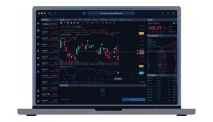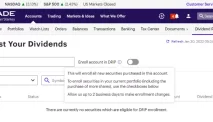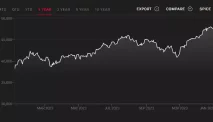Diksia.com - Shorting is a trading technique that involves selling an asset that you do not own, hoping to buy it back later at a lower price and pocket the difference. Shorting can be used to profit from falling markets, hedge against risks, or diversify your portfolio. However, shorting also involves higher risks, fees, and regulations than buying and holding. Therefore, you need a reliable and suitable trading platform to execute your short trades and manage your positions.
In this article, we will review some of the best trading platforms for shorting stocks and crypto, based on features, fees, availability, and customer support. We will also discuss some of the factors to consider when choosing a platform for shorting, such as margin requirements, leverage, liquidity, short inventory, and order types.
What is Shorting and How Does it Work?
Shorting, also known as short selling, is a trading strategy that involves borrowing an asset from a broker or an exchange, selling it in the market, and buying it back later at a lower price. The difference between the selling price and the buying price is your profit or loss.
For example, suppose you think that the price of Apple stock (AAPL) will drop from $150 to $140. You borrow 100 shares of AAPL from your broker and sell them in the market for $15,000. Later, you buy back the 100 shares for $14,000 and return them to your broker. You make a profit of $1,000, minus any fees or interest that you pay to your broker.
However, if the price of AAPL goes up instead of down, you will lose money. For instance, if the price rises to $160, you will have to buy back the 100 shares for $16,000 and return them to your broker. You will lose $1,000, plus any fees or interest that you pay to your broker.
Shorting can also be done with crypto assets, such as Bitcoin (BTC) or Ethereum (ETH). However, instead of borrowing the actual coins, you usually trade contracts for difference (CFDs) or futures contracts that track the price movements of the underlying assets. CFDs and futures are derivatives that allow you to speculate on the price changes of an asset without owning it. You can open a short position by selling a CFD or a futures contract and close it by buying it back later.
For example, suppose you think that the price of BTC will drop from $50,000 to $40,000. You sell a CFD or a futures contract that represents 1 BTC for $50,000. Later, you buy back the contract for $40,000. You make a profit of $10,000, minus any fees or commissions that you pay to your broker or exchange.
However, if the price of BTC goes up instead of down, you will lose money. For instance, if the price rises to $60,000, you will have to buy back the contract for $60,000. You will lose $10,000, plus any fees or commissions that you pay to your broker or exchange.
What are the Benefits and Risks of Shorting?
Shorting can have several benefits, such as:
- Profiting from falling markets: Shorting allows you to make money when the price of an asset goes down, which can be useful in bearish or volatile markets.
- Hedging against risks: Shorting can help you reduce your exposure to the downside risk of an asset that you own or plan to buy. For example, if you own AAPL shares and expect a temporary drop in the price, you can short AAPL to offset your potential losses.
- Diversifying your portfolio: Shorting can help you diversify your portfolio and increase your returns by taking advantage of different market conditions and opportunities.
However, shorting also involves significant risks, such as:
- Unlimited losses: Unlike buying and holding an asset, where your maximum loss is limited to the amount you invest, shorting can result in unlimited losses if the price of the asset goes up indefinitely. You will have to buy back the asset at a higher price than you sold it, which can wipe out your account or even put you in debt.
- Margin calls: When you short an asset, you need to have enough funds in your account to cover the margin requirements of your broker or exchange. Margin is the amount of money that you need to deposit as collateral for your short position. If the price of the asset goes up, your margin will decrease and you may face a margin call, which is a request from your broker or exchange to deposit more funds or close your position. If you fail to meet the margin call, your position may be liquidated at a loss.
- Fees and interest: When you short an asset, you have to pay fees and interest to your broker or exchange for borrowing the asset or the contract. These fees and interest can vary depending on the availability and demand of the asset, and they can eat into your profits or increase your losses.
- Regulations and restrictions: Shorting is subject to various regulations and restrictions in different markets and jurisdictions. For example, some stocks may not be available for shorting, or you may need to comply with certain rules, such as the uptick rule, which prevents you from shorting a stock when its price is falling. Similarly, some crypto exchanges may not offer shorting services, or you may need to verify your identity and location before you can short crypto.
What are the Factors to Consider When Choosing a Trading Platform for Shorting?
When choosing a trading platform for shorting, you should consider the following factors:
- Margin requirements: Margin requirements are the amount of funds that you need to deposit and maintain in your account to open and keep a short position. Different platforms may have different margin requirements, depending on the asset, the leverage, and the risk level. You should choose a platform that has reasonable and affordable margin requirements for your shorting strategy and budget.
- Leverage: Leverage is the ratio of the size of your position to the size of your margin. For example, if you have $10,000 in your account and you use 10x leverage, you can open a short position worth $100,000. Leverage can amplify your profits or losses, depending on the price movement of the asset. Different platforms may offer different levels of leverage, ranging from 2x to 100x or more. You should choose a platform that offers the level of leverage that suits your risk appetite and trading style.
- Liquidity: Liquidity is the ease and speed of buying and selling an asset in the market. High liquidity means that you can easily and quickly execute your short trades at the desired price and volume. Low liquidity means that you may face delays, slippage, or partial fills, which can affect your profits or losses. Different platforms may have different levels of liquidity, depending on the asset, the market, and the trading volume. You should choose a platform that has high liquidity for the asset that you want to short.
- Short inventory: Short inventory is the availability and supply of the asset that you want to short. Not all assets are available for shorting, and some assets may have limited or high-demand short inventory, which can affect the fees and interest that you pay to your broker or exchange. Different platforms may have different short inventories, depending on the asset, the market, and the trading volume. You should choose a platform that has a large and stable short inventory for the asset that you want to short.
- Order types: Order types are the options and instructions that you can use to enter and exit your short trades. Different order types can help you execute your short trades at the best price and time, as well as manage your risk and reward. Some of the common order types for shorting are market orders, limit orders, stop orders, and trailing stop orders. Different platforms may offer different order types, depending on the asset, the market, and the trading interface. You should choose a platform that offers the order types that suit your shorting strategy and preferences.
- Customer support: Customer support is the quality and availability of the service and assistance that you can get from your broker or exchange. Customer support can be crucial when you encounter any issues, questions, or problems with your short trades, such as technical glitches, margin calls, or disputes. Different platforms may have different levels of customer support, depending on the communication channels, the response time, and the professionalism. You should choose a platform that has reliable and responsive customer support for your shorting needs.
What are the Best Trading Platforms for Shorting Stocks and Crypto?
Based on the factors mentioned above, here are some of the best trading platforms for shorting stocks and crypto:
Best Overall: eToro
eToro is a leading social trading platform that allows you to trade stocks, crypto, forex, commodities, indices, and ETFs. eToro offers short selling services for both stocks and crypto, using CFDs. You can short over 2,000 stocks and 17 crypto assets, with leverage up to 5x for stocks and 2x for crypto.
eToro has low margin requirements, high liquidity, large short inventory, and various order types. eToro also has a user-friendly and intuitive trading interface, as well as a social network where you can interact with other traders, copy their trades, and learn from their strategies. eToro has excellent customer support, available via phone, email, or live chat, in multiple languages.
eToro is regulated by several authorities, such as the FCA, CySEC, and ASIC, and has a high level of security and transparency. eToro is the best overall trading platform for shorting stocks and crypto, as it offers a comprehensive and convenient service for both beginners and experienced traders.
Best for Stocks: Interactive Brokers
Interactive Brokers is a global brokerage firm that offers trading services for stocks, options, futures, forex, bonds, and funds. Interactive Brokers allows you to short sell over 10,000 stocks from 135 markets around the world, with leverage up to 4x. Interactive Brokers has low margin requirements, high liquidity, large short inventory, and various order types.
Interactive Brokers also has a powerful and advanced trading platform, called Trader Workstation, which provides you with sophisticated tools and features, such as market scanners, alerts, charts, indicators, and algorithms. Interactive Brokers has professional and knowledgeable customer support, available via phone, email, or chat, in multiple languages.
Interactive Brokers is regulated by several authorities, such as the SEC, FINRA, and FCA, and has a high level of security and reliability. Interactive Brokers is the best trading platform for shorting stocks, as it offers a wide range of markets and instruments, as well as a robust and versatile trading platform.
Best for Crypto: Bybit
Bybit is a leading crypto derivatives exchange that offers trading services for BTC, ETH, XRP, and EOS. Bybit allows you to short sell these crypto assets, using perpetual contracts or inverse futures contracts, with leverage up to 100x. Bybit has low margin requirements, high liquidity, large short inventory, and various order types.
Bybit also has a user-friendly and intuitive trading platform, which provides you with easy access and control over your short trades, as well as a range of tools and features, such as charts, indicators, signals, and trading bots. Bybit has excellent customer support, available via email, chat, or social media, in multiple languages.
Bybit is regulated by the BVI FSC and has a high level of security and transparency. Bybit is the best trading platform for shorting crypto, as it offers a fast and flexible service for both beginners and experienced traders.
Conclusion
Shorting is a trading technique that can help you profit from falling markets, hedge against risks, or diversify your portfolio. However, shorting also involves higher risks, fees, and regulations than buying and holding. Therefore, you need a reliable and suitable trading platform to execute your short trades and manage your positions.
In this article, we reviewed some of the best trading platforms for shorting stocks and crypto, based on features, fees, availability, and customer support. We also discussed some of the factors to consider when choosing a platform for shorting, such as margin requirements, leverage, liquidity, short inventory, and order types.
We hope that this article has helped you find the best trading platform for shorting stocks and crypto, according to your needs and preferences. Happy trading!






